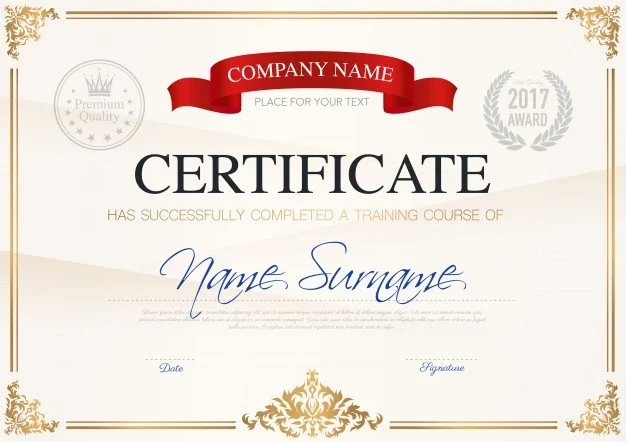
0
+
Google Reviews

0
+
A MySQL Developer is a professional who specializes in working with MySQL, an open-source relational database management system (RDBMS). MySQL is widely used for developing and maintaining databases for various applications, websites, and software solutions. MySQL Developers play a critical role in the development and maintenance of MySQL databases, ensuring data reliability, performance, and security for various applications and systems


Microsoft SQL Server is among the top 3 relational database management systems in the world and getting the skills to becoming an SQL Server DBA will serve you well and open many job opportunities .






Module-1 Retrieving Data Using the MySQL SELECT Statement
Module-1 Basic SELECT Statement
Module-1 Selecting All Columns
Module-1 Selecting Specific Columns
Module-1 Arithmetic Expressions
Module-1 Defining a Null Value
Module-1 Duplicate Rows
Module-1 Displaying Table Structure
Module-1 Assignments
Module-2 Restricting and Sorting Data
Module-2 Limiting Rows Using a Selection
Module-2 Using the WHERE Clause
Module-2 Character Strings and Dates
Module-2 Comparison Conditions
Module-2 Logical Conditions
Module-2 Rules of Precedence
Module-2 Using the ORDER BY Clause
Module-2 Using the LIMIT Clause
Module-2 Assignments
Module-3 Using Single-Row Functions to Customize Output
Module-3 MySQL Functions
Module-3 Two Types of MySQL Functions
Module-3 Single-Row Functions
Module-3 Character Functions
Module-3 Case-Manipulation Functions
Module-3 Character-Manipulation Functions
Module-3 Number Functions
Module-3 Working with Dates
Module-3 Arithmetic with Dates
Module-3 Date Functions
Module-3 Conversion Functions
Module-3 Nesting Functions
Module-3 General Functions
Module-3 Conditional Expressions
Module-3 Assignments
Module-4 Reporting Aggregated Data Using the Group Functions
Module-4 Types of Group Functions
Module-4 Group Functions and Null Values
Module-4 Creating Groups of Data
Module-4 Using the GROUP BY Clause
Module-4 Restricting Group Results
Module-4 Using the HAVING Clause
Module-4 Assignments
Module-5 Displaying Data from Multiple Tables
Module-5 Obtaining Data from Multiple Tables
Module-5 Types of Joins
Module-5 Joining Tables Using SQL:1999 Syntax
Module-5 Creating Natural Joins
Module-5 Creating Joins with the USING Clause
Module-5 Using Table Aliases
Module-5 Creating Joins with the ON Clause
Module-5 Self-Joins Using the ON Clause
Module-5 Applying Additional Conditions to a Join
Module-5 Creating Three-Way Joins with the ON Clause
Module-5 Non-Equijoins
Module-5 Outer Joins
Module-5 INNER Versus OUTER Joins
Module-5 LEFT | RIGHT OUTER JOIN
Module-5 Cartesian Products
Module-5 Cross Join
Module-5 Assignments
Module-6 Using Subqueries to Solve Queries
Module-6 Using a Subquery to Solve a Problem
Module-6 Guidelines for Using Subquery
Module-6 Types of Subqueries
Module-6 Single-Row Subqueries
Module-6 Using Group Functions in a Subquery
Module-6 The HAVING Clause with Subqueries
Module-6 Multiple-Row Subqueries
Module-6 Using the ANY Operator in Multiple-Row Subqueries
Module-6 Using the ALL Operator in Multiple-Row Subqueries
Module-6 TOP-N Analysis using Subquery
Module-6 Assignments
Module-7 Using the Set Operators
Module-7 UNION/UNION ALL
Module-7 INTERSECT
Module-7 MINUS
Module-7 Set Operator Guidelines
Module-7 Controlling the Order of Rows
Module-7 Assignments
Module-8 Manipulating Data
Module-8 Data Manipulation Language
Module-8 Adding a New Row to a Table
Module-8 INSERT Statement Syntax
Module-8 Inserting Rows with Null Values
Module-8 Copying Rows from Another Table
Module-8 Changing Data in a Table
Module-8 UPDATE Statement Syntax
Module-8 Updating Two Columns with a Subquery
Module-8 Updating Rows Based on Another Table
Module-8 Removing a Row from a Table
Module-8 DELETE Statement
Module-8 Deleting Rows from a Table
Module-8 TRUNCATE Statement
Module-8 Database Transactions
Module-8 Advantages of COMMIT and ROLLBACK Statements
Module-8 Controlling Transactions
Module-8 Rolling Back Changes to a Marker
Module-8 State of the Data After COMMIT
Module-8 Committing Data
Module-8 State of the Data After ROLLBACK
Module-8 Statement-Level Rollback
Module-8 Read Consistency
Module-8 Implementation of Read Consistency
Module-8 Assignments
Module-9 Using DDL Statements to Create and Manage Tables
Module-9 Database Objects
Module-9 CREATE TABLE Statement
Module-9 DEFAULT Option
Module-9 Data Types
Module-9 Including Constraints
Module-9 NOT NULL Constraint
Module-9 UNIQUE Constraint
Module-9 PRIMARY KEY Constraint
Module-9 FOREIGN KEY Constraint
Module-9 CHECK Constraint
Module-9 Violating Constraints
Module-9 Creating a Table by Using a Subquery
Module-9 ALTER TABLE Statement
Module-9 Dropping a Table
Module-9 Assignments
Module-10 What Is a View?
Module-10 Advantages of Views
Module-10 Simple Views and Complex Views
Module-10 Creating a View
Module-10 Retrieving Data from a View
Module-10 Modifying a View
Module-10 Creating a Complex View
Module-10 Rules for Performing DML Operations on a View
Module-10 Using the WITH CHECK OPTION Clause
Module-10 Removing a View
Module-10 Sequences (AUTO_INCREMENT)
Module-10 Using a Sequence
Module-10 Indexes
Module-10 Creating an Index
Module-10 Type of Index
Module-10 Removing an Index
Module-10 Assignments
Module-11 Declaring MySQL Variables
Module-11 Use of Variables
Module-11 Identifiers
Module-11 Handling Variables in MySQL
Module-11 Declaring and Initializing MySQL Variables
Module-11 Delimiters in String Literals
Module-11 Use of Select Statement in Block
Module-11 Assignments
Module-12 Writing Control Structures – Procedure
Module-12 Controlling Flow of Execution
Module-12 IF Statements
Module-12 Simple IF Statement
Module-12 IF THEN ELSE Statement
Module-12 IF ELSEIF ELSE Clause
Module-12 NULL Values in IF Statements
Module-12 CASE Statement
Module-12 CASE Statement: Example
Module-12 Searched CASE Expressions
Module-12 MySQL CASE vs. IF
Module-12 Iterative Control: LOOP Statements
Module-12 Basic Loops
Module-12 WHILE Loops
Module-12 REPEAT Loops
Module-12 Assignments
Module-13 Using Cursors – Procedure
Module-13 About Cursors
Module-13 Explicit Cursor Operations
Module-13 Controlling Explicit Cursors
Module-13 Declaring the Cursor
Module-13 Opening the Cursor
Module-13 Fetching Data from the Cursor
Module-13 Fetching Data from the Cursor using Loop
Module-13 Closing the Cursor
Module-13 Mysql CURSOR Restriction
Module-13 Cursors with Subqueries
Module-13 Assignments
Module-14 Handling Exceptions
Module-14 Declaring a handler
Module-14 MySQL error handling examples
Module-14 MySQL handler example in stored procedures
Module-14 MySQL handler precedence
Module-14 Using a named error condition
Module-14 MySQL handler precedence
Module-14 MySQL SIGNAL statement
Module-14 MySQL RESIGNAL statement
Module-14 Assignments
Module-15 Creating Stored Functions
Module-15 Describe the uses of functions
Module-15 Create stored functions
Module-15 Invoke a function
Module-15 Remove a function
Module-15 Differentiate between a procedure and a function
Module-15 Assignments
Module-16 Creating Stored Procedures
Module-16 Describe and create a procedure
Module-16 Create procedures with parameters
Module-16 Differentiate between formal and actual parameters
Module-16 Use different parameter-passing modes
Module-16 Invoke a procedure
Module-16 Handle exceptions in procedures
Module-16 Remove a procedure
Module-16 Assignments
Module-17 Creating Triggers
Module-17 Describe the different types of triggers
Module-17 Describe database triggers and their uses
Module-17 Create database triggers
Module-17 Describe database trigger-firing rules
Module-17 Remove database triggers
Module-17 Assignments
+91 8882400500




I had undergone oracle DBA course under Chetan sir's Guidance an it was a very good learning experience overall since they not only provide us with theoretical knowledge but also conduct lot of practical sessions which are really fruitful and also the way of teaching is very fine clear and crisp which is easier to understand, overall I had a great time for around 2 months, they really train you well.also make it a point to clear all your doubts and provide you with clear and in-depth concepts hence hope to join sometime again
I have completed Oracle DBA 11g from Radical technology pune. Excellent trainer (chetna gupta). The trainer kept the energy level up and kept us interested throughout. Very practical, hands on experience. Gave us real-time examples, excellent tips and hints. It was a great experience with Radical technologies.
Linux learning with Anand sir is truly different experience... I don't have any idea about Linux and system but Anand sir taught with scratch...He has a great knowledge and the best trainer...he can solve all your queries related to Linux in very simple way and giving nice examples... 100 to Anand Sir.
I had a wonderful experience in Radical technologies where i did training in Hadoop development under the guidance of Shanit Sir. He started from the very basic and covered and shared everything he knew in this field. He was brilliant and had a lot of experience in this field. We did hands on for every topic we covered, and that's the most important thing because honestly theoretical knowledge cannot land you a job.
I have recently completed Linux course under Anand Sir and can assuredly say that it is definitely the best Linux course in Pune. Since most of the Linux courses from other sources are strictly focused on clearing the certification, they will not provide an insight into real-world server administration, but that is not the case with Anand Sir's course. Anand Sir being an experienced IT infrastructure professional has an excellent understanding of how a data center works and all these information is seamlessly integrated into his classes.
1. Basic user account management (creating, modifying, and deleting users).
2. Password resets and account unlocks.
3. Basic file system navigation and management (creating, deleting, and modifying files and directories).
4. Basic troubleshooting of network connectivity issues.
5. Basic software installation and package management (installing and updating software packages).
6. Viewing system logs and checking for errors or warnings.
7. Running basic system health checks (CPU, memory, disk space).
8. Restarting services or daemons.
9. Monitoring system performance using basic tools (top, df, free).
10. Running basic commands to gather system information (uname, hostname, ifconfig).
1. Intermediate user account management (setting permissions, managing groups).
2. Configuring network interfaces and troubleshooting network connectivity issues.
3. Managing file system permissions and access control lists (ACLs).
4. Performing backups and restores of files and directories.
5. Installing and configuring system monitoring tools (Nagios, Zabbix).
6. Analyzing system logs for troubleshooting purposes.
7. Configuring and managing software repositories.
8. Configuring and managing system services (systemd, init.d).
9. Performing system updates and patch management.
10. Monitoring and managing system resources (CPU, memory, disk I/O).
1. Advanced user account management (LDAP integration, single sign-on).
2. Configuring and managing network services (DNS, DHCP, LDAP).
3. Configuring and managing storage solutions (RAID, LVM, NFS).
4. Implementing and managing security policies (firewall rules, SELinux).
5. Implementing and managing system backups and disaster recovery plans.
6. Configuring and managing virtualization platforms (KVM, VMware).
7. Performance tuning and optimization of system resources.
8. Implementing and managing high availability solutions (clustering, load balancing).
9. Automating system administration tasks using scripting (Bash, Python).
10. Managing system configurations using configuration management tools (Ansible, Puppet).
1. Learning basic shell scripting for automation tasks. 2. Understanding file system permissions and ownership. 3. Learning basic networking concepts (IP addressing, routing). 4. Learning how to use package management tools effectively. 5. Familiarizing with common Linux commands and utilities. 6. Understanding basic system architecture and components. 7. Learning basic troubleshooting techniques and methodologies. 8. Familiarizing with basic security principles and best practices. 9. Learning how to interpret system logs and diagnostic output. 10. Understanding the role and importance of system backups and restores.
1. Advanced scripting and automation techniques (error handling, loops).
2. Understanding advanced networking concepts (VLANs, subnetting).
3. Familiarizing with advanced storage technologies (SAN, NAS).
4. Learning advanced security concepts and techniques (encryption, PKI).
5. Understanding advanced system performance tuning techniques.
6. Learning advanced troubleshooting methodologies (root cause analysis).
7. Implementing and managing virtualization and cloud technologies.
8. Configuring and managing advanced network services (VPN, IDS/IPS).
9. Implementing and managing containerization technologies (Docker, Kubernetes).
10. Understanding enterprise-level IT governance and compliance requirements.
1. Designing and implementing complex IT infrastructure solutions. 2. Architecting and implementing highly available and scalable systems. 3. Developing and implementing disaster recovery and business continuity plans. 4. Conducting security audits and vulnerability assessments. 5. Implementing and managing advanced monitoring and alerting systems. 6. Developing custom automation solutions tailored to specific business needs. 7. Providing leadership and mentorship to junior team members. 8. Collaborating with other IT teams on cross-functional projects. 9. Evaluating new technologies and making recommendations for adoption. 10. Participating in industry conferences, workshops, and training programs.
Abu Dhabi
Abu Dhabi
Abu Dhabi
Abu Dhabi
Abu Dhabi
Abu Dhabi
Abu Dhabi
Abu Dhabi
Abu Dhabi
Abu Dhabi
Abu Dhabi
Abu Dhabi
Abu Dhabi
Abu Dhabi
Abu Dhabi
Abu Dhabi
Abu Dhabi
Abu Dhabi
Abu Dhabi
Abu Dhabi
Abu Dhabi
Abu Dhabi
Abu Dhabi
Abu Dhabi
Abu Dhabi
Abu Dhabi
Abu Dhabi
Abu Dhabi
Abu Dhabi
Abu Dhabi
Abu Dhabi
Abu Dhabi
Abu Dhabi
Abu Dhabi
Abu Dhabi
Abu Dhabi
Abu Dhabi
Abu Dhabi
Abu Dhabi
Abu Dhabi







(Our Team will call you to discuss the Fees)


(Our Team will call you to discuss the Fees)